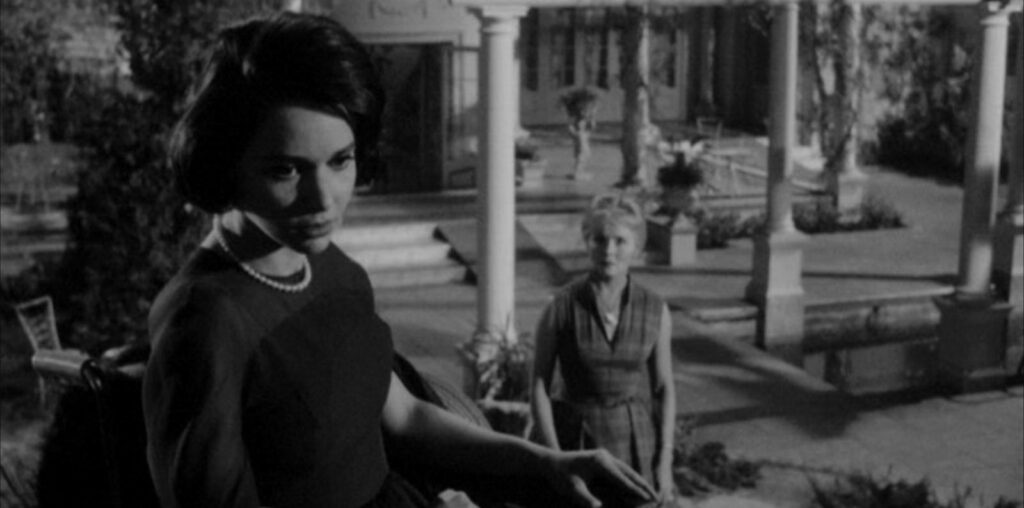
Hammer Productions’ Taste Of Fear (1961) sees director Seth Holt working at the height of his powers. Taste Of Fear, like Holt’s best films for Hammer, is a thriller rather than a horror picture. Holt excelled at transcribing to film the terror of trauma. Not unlike The Nanny (1965), Taste Of Fear deals with a reckoning with the past though with a greater emphasis on retribution.
Written by Hammer stalwart Jimmy Sangster, Taste Of Fear tells the story of a girl named Penny (Susan Strasberg) who is confined to a wheelchair after a horse riding accident. Three years after the death of her mother, Penny’s father invites her to come live with him and her stepmother Jane (Ann Todd). However when Penny arrives her father’s driver Bob (Ronald Lewis) informs her that her father was suddenly called away on business. It isn’t long before ghostly apparitions begin to torment Penny. Is she simply going insane as Dr. Gerrard (Christopher Lee) suggests, or is she being driven mad for some devious reason?
Apart from sporting the best twist-ending of any Hammer Film, Taste Of Fear is also one of the most beautifully photographed Hammer pictures. Douglas Slocombe’s (the man who photographed the first three Indiana Jones movies) high contrast black and white cinematography evokes the nightmarish shadow world of film noir but condensed within Seth Holt’s claustrophobic compositions. Taste Of Fear opens with a series of wide shots encompassing an entire mountain range but as soon as Penny arrives in Nice the spaces and the framing all close in. Director and cinematographer have created a visceral representation of paranoia and dread.
Taste Of Fear has links to film noir beyond its visuals. In the Ann Todd character Jane the femme fatale is inverted. Yes she uses her sexuality in true femme fatale fashion to exude control over Bob but she is twenty years older than he is. Jane’s femme fatale operations occur off screen for the first two acts of the film before, at the climax of the second act, her intense sexual relationship explodes across the screen with a fiery kiss. Until this moment Holt had treated Jane as a sinister maternal figure. The sudden on screen transformation immediately adds depth and complexity to her character while also empowering the “grandmother” type as a figure of sexual agency.
Those devotees to Hammer Films likely already know that Christopher Lee, the veritable face of the studio in the mind of the public, considered Taste Of Fear to be his best film for the studio. Lee’s statement strengthens the argument that Seth Holt deserves a critical reevaluation as well as acknowledgement as one of the great directors associated with Hammer; along with Terence Fisher, Freddie Francis, and Michael Carreras. Taste Of Fear, along with Cash On Demand (1961), proves that Hammer was as adept at the psychological thriller as the horror film.
